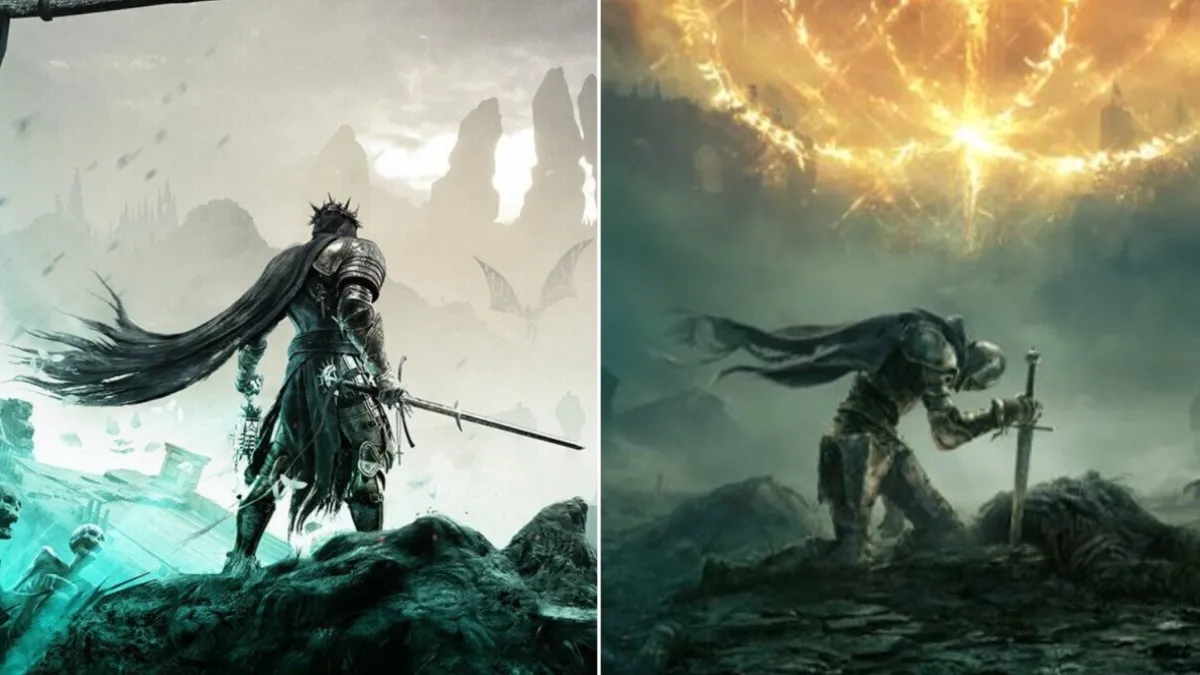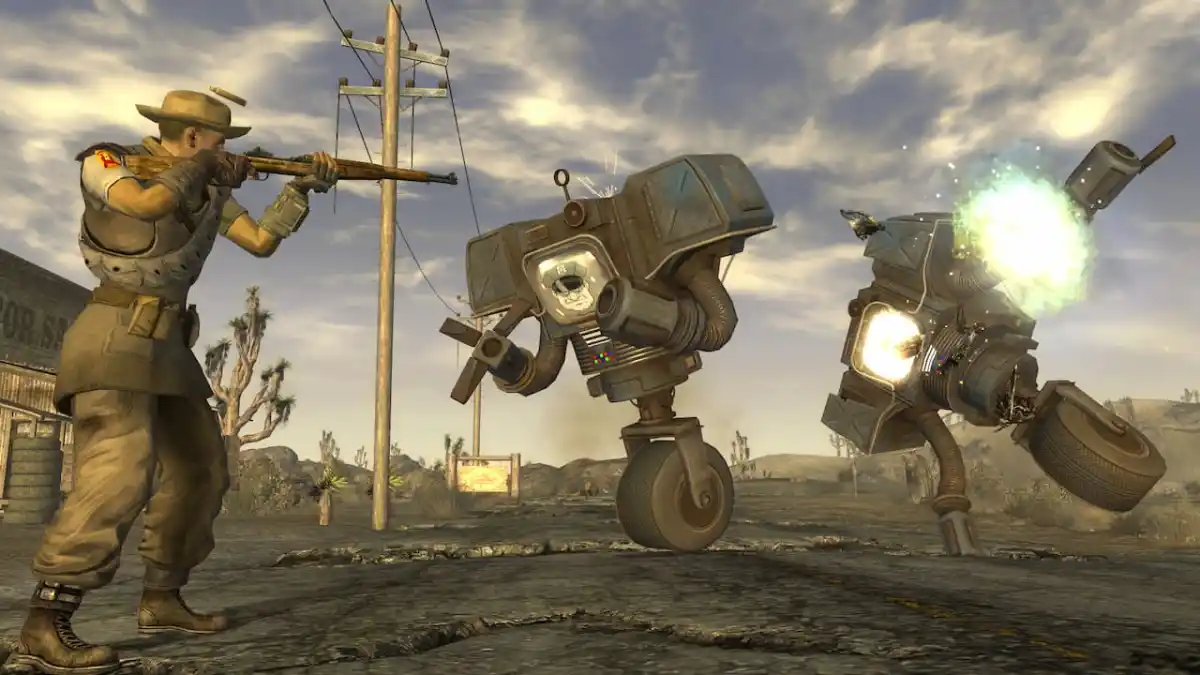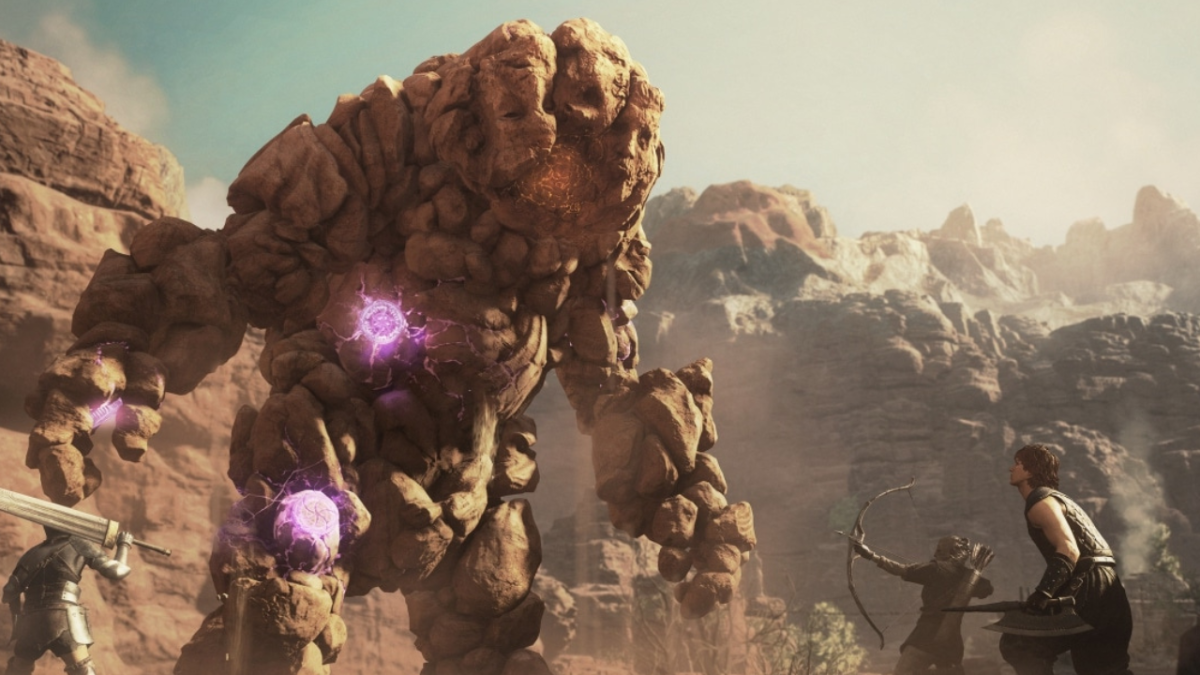Lords of the Fallen is a reboot of the 2014 title of the same name: one of the very first to take on From Software at their own hard-as-nails game. The Soulslike landscape has changed immeasurably since then, however, with imitators great and small emerging from the gaming woodwork to claim their own slice of the difficult ARPG pie. But just how does Lords of the Fallen compare to the current king of the genre, last year’s monolithic masterpiece Elden Ring? Read on to find out.
How does Lords of the Fallen stack up against Elden Ring?
Progression
One of the most obvious, yet important comparisons to be made between Lords of the Fallen and Elden Ring is the way in which they decide to lay out their respective game worlds. This is a major part of how players will experience the game and interact with its various sections, and is particularly relevant when it comes to the balance of difficulty.

Elden Ring was notable for taking the Souls formula and pouring it into an open-world mold. Right from the word go, the player had the freedom to travel pretty much anywhere they liked, with the vast majority of the content being optional. This was a revolutionary approach, and it was extremely popular with hardcore fans of the genre who enjoyed min-maxing their favorite builds and beelining their way towards the items and weapons necessary to do so.
This approach was not without its drawbacks, however. Complete freedom meant that players would often encounter content they were either massively under- or over-leveled for. Neither scenario was ideal, resulting in incredibly frustrating or underwhelming experiences, respectively, and was ultimately the heart of much of the criticism of Elden Ring — at release and to this day.

Lords of the Fallen takes a much more traditional approach to its world design. Drawing from what many would consider the height of the genre, Dark Souls 3, the game sets players on what is essentially a linear path, with a few offshoots along the way but nothing major. This lessens the exploration potential in the game, but it also allows for a much smoother difficulty curve, with the designers able to balance each encounter around a small range of levels for the best possible experience. In this regard, Lords of the Fallen feels more restrictive, but also more tightly designed. There may not be as many ways to play it, but you’re guaranteed a polished experience each time you do.
Traversal
An aspect of Elden Ring that isn’t discussed nearly enough is its inclusion of a dedicated jump button. Together with the player’s mount, Torrent, this completely transforms traversal in the game, creating a set of areas that feel more dense and secret-packed than ever before. With the ability to jump comes vertical navigation, turning what would be nothing but set dressing in past games into hidden paths.

Of course, the player has always been able to jump via a cumbersome combination of buttons in past games, something that Lords of the Fallen brings back in its own design, but those jumps were always horizontal in nature, intended to clear wide gaps but not climb up stacked stones or over walls. Elden Ring’s jump was a game-changer, opening up new avenues of exploration that made every area feel truly alive.
Torrent doubled down on this, quite literally, by featuring an incredibly useful double jump. Combined with dashes, this made overworld exploration silky smooth, allowing for new navigation options both in and out of combat. This was largely positively received, but it did trivialize the majority of the game’s overworld content, since you could just dash right past most enemies and world bosses you encountered rather than stand your ground and fight them.

Lords of the Fallen has its own interesting spin on traversal. While your movement options here are much more limited, you can explore every inch of the world in two distinct states: Axiom and Umbral. Axiom is the default, standard version of the world, while Umbral is its darker twin, accessed via death or the Umbral Lamp. Not only are both versions visually distinct, but they also bring different items, enemies, and environmental layouts. Exploring in Lords of the Fallen takes me right back to A Link to the Past, and its light world/dark world mechanics: you’ll jump between worlds regularly to solve small puzzles and defeat tricky enemies, with Umbral also offering an interesting risk/reward system when it comes to grinding for levels. While the locales you’ll visit aren’t as densely designed as those in Elden Ring, they are much more focused, and there’s still plenty to explore for those willing to experiment with the Umbral Lamp.
Combat
Now we get to the heart of things. Both of these games live or die on the strength of their combat systems and the scenarios they support, so how does Lords of the Fallen compare to Elden Ring in this regard? Much more closely than the previous two categories, that’s for certain. Both games have incredibly similar core combat systems, relying on combinations of light and heavy attacks, blocks, dodge rolls, and parries, all of which draw from a single stamina meter for use. The stamina meter is the unsung hero of the Soulslike genre and it proves that in both of these games, its management will, more often than not, decide the outcome of every battle you fight.

While the systems that govern their combat are very similar, the combat scenarios you’ll actually face in both games are quite different. Elden Ring kicked up the speed considerably compared to past From Software titles, featuring enemies with incredibly quick multi-hit combos right from the get-go. This was balanced somewhat by a much longer stamina meter — and the additional options opened up by the previously-mentioned additions of the jump button and Torrent — but it still results in combat that feels hectic, where you go into every fight with the expectation of trading at least a few hits on your way to victory.

Lords of the Fallen goes back to basics here. Your character feels much bulkier than in Elden Ring, with a real sense of weight behind every swing of your sword. This means that you can’t afford to get cocky even against low-level foes, as I learned the hard way fighting the infuriating cross-wielders that dominate the early sections. Your stamina and health bars are both much more limited early on too, which limits both your options and your possible mistakes. The result is combat that feels appropriately focused given the tight focus of the game’s traversal and progression. You don’t have the option of leveling the difficulty out of a fight or just riding around on horseback: you have to learn the ins and outs of each encounter, slowly develop a strategy for dealing with it, and finally execute it to near-perfection in order to proceed. It’s a return to the “get better or get nowhere” ruthlessness of the earlier games in the series, and it feels refreshing when placed next to the sprawling mess that is Elden Ring’s possible difficulty.
Story
Soulslike games have always been fairly cryptic when it comes to their story elements, and both Lords of the Fallen and Elden Ring keep this tradition alive. You get a brief introduction to the worlds of both in their respective intro cinematics, but beyond that, the amount of narrative you’ll receive depends entirely on how willing you are to engage with their NPC sidequests and item descriptions.

Both games tell large chunks of their story through these methods, establishing details of the major factions and characters that you wouldn’t get if you just blazed on through. The bosses and areas you encounter are all deliberately designed to be vague and mysterious, with the intent of pushing you towards these aspects of the game to learn more.

There really isn’t much to differentiate Lords of the Fallen from Elden Ring in terms of how they handle their stories, but what is different is their scale. By virtue of its huge suite of content, Elden Ring has far more story to experience as well: far more NPC questlines, far more item descriptions, and far more bosses to dive into. George R.R. Martin certainly earned his worldbuilding check on this one, and if you want a world that you can really sink into and spend hours unraveling, then Elden Ring likely has the edge here. That said, Lords of the Fallen does an admirable job in its own right, albeit on a much smaller scale.
Conclusion
So with all that said, how does Lords of the Fallen compare to Elden Ring? Overall, the two share many similarities in terms of gameplay, visual design, and tone, but they also both provide fundamentally different experiences for the player. Elden Ring is a vast, sprawling adventure with a huge amount of player freedom, in which you can chart your own course through a densely-packed world. Lords of the Fallen, on the other hand, is much more tightly focused, presenting a more linear adventure that also has a smoother difficulty curve and clearer escalation of threats and stakes. Which one you’ll prefer ultimately comes down to your own preferences, but both are sterling examples of the kinds of experiences they seek to provide, and both are among the very best that the Soulslike genre has to offer.





